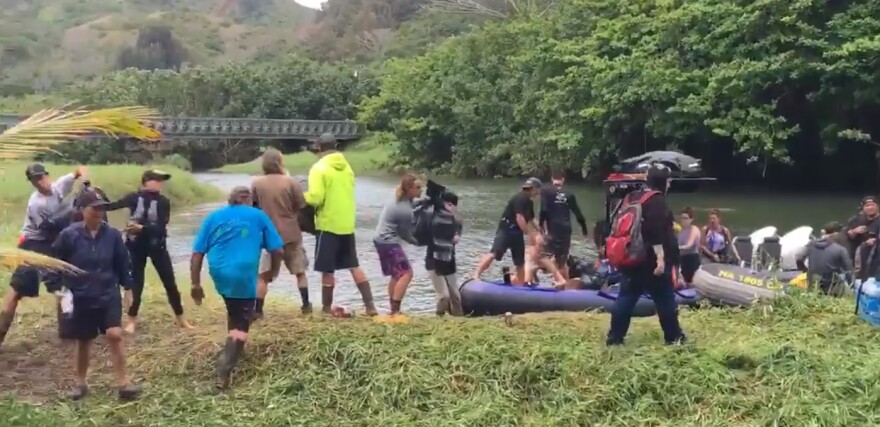One week after historic rains swamped the north shore of Kaua?i, communities at the end of the road remain isolated. While geographic isolation raises unique challenges in disaster recovery, it always strengthens this community’s self-reliance. HPR’s Ku?uwehi Hiraishi has this story.
Self-reliance is nothing new to the flood-devastated communities on Kaua?i’s North Shore. Hanalei resident Maka?ala Ka?aumoana says when Hurricane ‘Iniki hit in 1992, community members turned away much of the external aid. Mostly because they already took action.
“This is not a community that has ever sat still and waited,” says Ka?aumoana, “We have never been on the curb with a cup yeah? And we have that reputation.”
Over the last week, community members and organizations from Hanalei to H??ena mobilized one of the community’s most responsive, grassroots disaster relief efforts to date.
“We’re doing the cooking at Waip?, the feeding at the courthouse. Two local restaurants stepped up and fed everybody,” says Ka?aumoana, “So we?ve got a steady stream of volunteers coming to the courthouse to be coordinated. So right now we’re using the courthouse for that. The County finally let us in.”
Daily boat transportation is available with online reservations to the isolated communities of Wainiha and H??ena. Clean-up crews are being deployed on the daily. And specific supply requests from community members are being fulfilled by the boat load.
“We got boots on the ground, guys are working. Guys are spending their own money unfortunately. But you know it is what it is,” says Ka?aumoana, “These guys have not left one kupuna uncared for, one keiki unfed, not one leaf unturned. It is unbelievable.”
In the last century, generations of families from Wai?oli to Waip?, Waikoko to Lumaha?i have survived tsunamis, hurricanes, landslides, and flooding. A community mindset runs strong on this coast.
“We teach our children to take care of our k?puna, to take care of our keiki. Those are the values that come into play right now and they are real! They’re absolutely real,” says Ka?aumoana, “‘Where is aunty? I haven’t seen aunty? Has anybody been to her house? You know, what’s going on?’ These young people who have been raised in this community with that kind of history just figured that?s how it is, that?s how it?s done. They don?t know the difference.”
These values come from a long history of geographic isolation. And every disaster, says Ka?aumoana, is a reminder of the community’s deep connection to the land.
“You know for Hawaiians, we don’t see ourselves as above the land. We see ourselves ‘of’ the land and stewards of the land. We don’t see ourselves as having dominion over it, right?’ says Ka?aumoana, “So this is when that really comes into play because if you saw yourself as having dominion over the land, you just got kurflunked.”
Looking toward the future, she sees opportunity.
“This is the time. After we get passed this emergency piece…this is the time to do some planning,” says Ka?aumoana, “Coastal areas where people have been building where maybe they shouldn’t be. This is the time to put the North Shore shuttle in place so we don’t have cars running to the end of the road all day long. This is the time when we can back up, take a good look and take a deep breath and plan these things correctly.”





